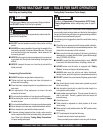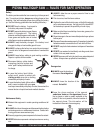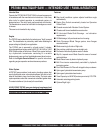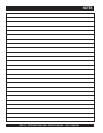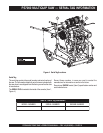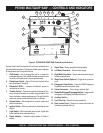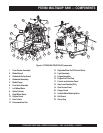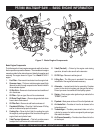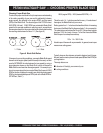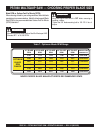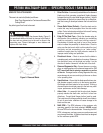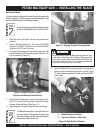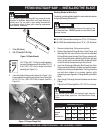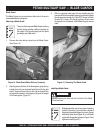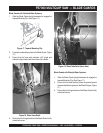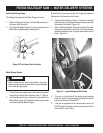
PS7060 MULTIQUIP SAW • OPERATION MANUAL — REV. #2 (06/02/08) — PAGE 23
PS7060 MULTIQUIP SAW — CHOOSING PROPER BLADE SIZE
Choosing Proper Blade Size
To select the proper size blade for the job requires an understanding
of the cutting capability of your saw and its relationship between
engine power, (as reflected in the engine RPM), and the speed
(RPM) of the Blade Shaft. The diesel engine of the PS7060 runs at
2800 RPM (full load). If 2800 RPM was a desirable Blade Shaft
speed for the average conditions in which you work, we would use
the same size sheave on the engine shaft and the blade shaft making
the resulting ratio between the two of 1:1. (See figure 8.)
Figure 8. Blade Shaft Ratios
If, however, for your cutting conditions, you need a Blade Shaft speed
slower than the engine speed (and this usually is the case), we then
need to INCREASE the ratio between the two speeds by using a
larger diameter sheave on the Blade Shaft, which will cause the
Blade Shaft to run slower than the engine speed. If, for example, you
know from experience that you need a Blade Shaft speed of 2000
RPM for the size of blade you normally use, divide the engine speed
RPM by the desired blade speed RPM (refer to the Blade RPM vs.
SFPM Chart, Table 7.)
2800 (engine RPM) / 2000 (desired BS RPM) = 1.4
This is the ratio 1.4 : 1, which means that for every 1.4 revolutions of
the engine, the Blade Shaft only turns once.
Ratios greater than 1 : 1 also have the beneficial effect of
increasing
the torque of the Blade Shaft
by the same factor (1.4 in our example).
The manufacturer advertises the Deutz 2011 Series diesel engine
develops 133 ft. lbs. (max) of torque. To find the
theoretical
Blade
Shaft torque of our example saw setup:
133 x 1.4 = 186.2 ft. lbs.
Actual torque of the saw will vary somewhat. In general, more torque
means more cutting power.
Typically, however, the ratios are not used to design a level of torque;
they are used to create optimum blade speed (Blade Shaft RPM) for
your application.
The major factors are:
■
diameter of blade(s) you commonly use
■
cutting conditions
1 : 1 Ratio
1.4 : 1 Ratio



